背景
在项目过程中,有时候你需要调用非C#编写的DLL文件,尤其在使用一些第三方通讯组件的时候,通过C#来开发应用软件时,就需要利用DllImport特性进行方法调用。本篇文章将引导你快速理解这个调用的过程。
步骤
1. 创建一个CSharpInvokeCPP的解决方案:
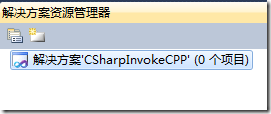
2. 创建一个C++的动态库项目:
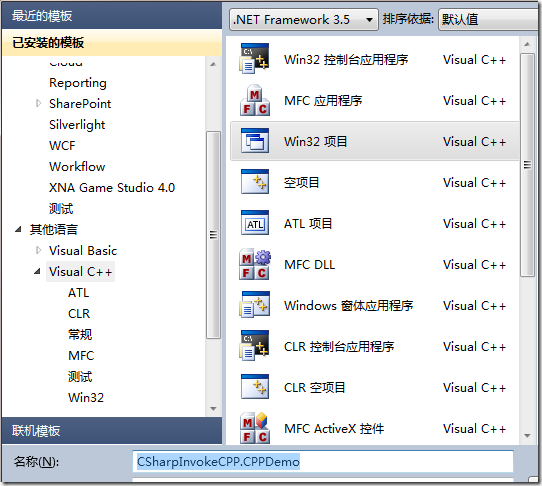
3. 在应用程序设置中,选择“DLL”,其他按照默认选项:
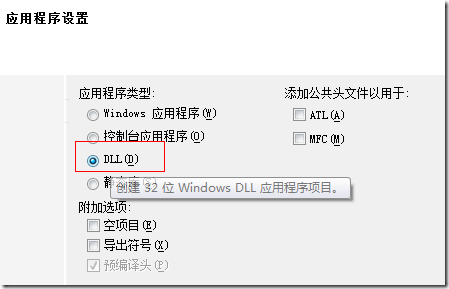
最后点击完成,得到如图所示项目:
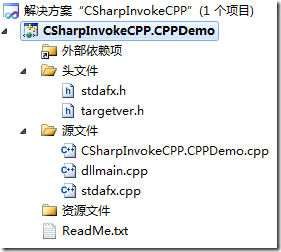
我们可以看到这里有一些文件,其中dllmain.cpp作为定义DLL应用程序的入口点,它的作用跟exe文件有个main或者WinMain入口函数是一样的,它就是作为DLL的一个入口函数,实际上它是个可选的文件。它是在静态链接时或动态链接时调用LoadLibrary和FreeLibrary时都会被调用。详细内容可以参考(DllMain详解-CSDN博客)。
4. 现在我们打开CSharpInvokeCPP.CPPDemo.cpp文件:
现在我们加入以下内容:
| 1 2 3 4 5 6 7 8 9 10 11 12 13 14 15 16 17 18 19 20 21 | // CSharpInvokeCPP.CPPDemo.cpp : 定义 DLL 应用程序的导出函数。
//
#include "stdafx.h"
extern "C" __declspec(dllexport) int Add(int x, int y)
{
return x + y;
}
extern "C" __declspec(dllexport) int Sub(int x, int y)
{
return x - y;
}
extern "C" __declspec(dllexport) int Multiply(int x, int y)
{
return x * y;
}
extern "C" __declspec(dllexport) int Divide(int x, int y)
{
return x / y;
}
|
extern "C" 包含双重含义,从字面上即可得到:首先,被它修饰的目标是“extern”的;其次,被它修饰的目标是“C”的。而被extern "C"修饰的变量和函数是按照C语言方式编译和连接的。
__declspec(dllexport)的目的是为了将对应的函数放入到DLL动态库中。
extern "C" __declspec(dllexport)加起来的目的是为了使用DllImport调用非托管C++的DLL文件。因为使用DllImport只能调用由C语言函数做成的DLL。
5. 编译项目程序,最后在Debug目录生成CSharpInvokeCPP.CPPDemo.dll和CSharpInvokeCPP.CPPDemo.lib

我们用反编译工具PE Explorer查看下该DLL里面的方法:

可以发现对外的公共函数上包含这四种“加减乘除”方法。
6. 现在来演示下如何利用C#项目来调用非托管C++的DLL,首先创建C#控制台应用程序:

7. 在CSharpInvokeCSharp.CSharpDemo项目上新建一个CPPDLL类,编写以下代码:
| 1 2 3 4 5 6 7 8 9 10 11 12 13 14 | public class CPPDLL
{
[DllImport("CSharpInvokeCPP.CPPDemo.dll")]
public static extern int Add(int x, int y);
[DllImport("CSharpInvokeCPP.CPPDemo.dll")]
public static extern int Sub(int x, int y);
[DllImport("CSharpInvokeCPP.CPPDemo.dll")]
public static extern int Multiply(int x, int y);
[DllImport("CSharpInvokeCPP.CPPDemo.dll")]
public static extern int Divide(int x, int y);
}
|
DllImport作为C#中对C++的DLL类的导入入口特征,并通过static extern对extern “C”进行对应。
8. 另外,记得把CPPDemo中生成的DLL文件拷贝到CSharpDemo的bin目录下,你也可以通过设置【项目属性】->【配置属性】->【常规】中的输出目录:

这样编译项目后,生成的文件就自动输出到CSharpDemo中了。
9. 然后在Main入口编写测试代码:
| 1 2 3 4 5 6 7 8 9 10 11 12 13 14 15 16 | static void Main(string[] args)
{
int result = CPPDLL.Add(10, 20);
Console.WriteLine("10 + 20 = {0}", result);
result = CPPDLL.Sub(30, 12);
Console.WriteLine("30 - 12 = {0}", result);
result = CPPDLL.Multiply(5, 4);
Console.WriteLine("5 * 4 = {0}", result);
result = CPPDLL.Divide(30, 5);
Console.WriteLine("30 / 5 = {0}", result);
Console.ReadLine();
}
|
运行结果:
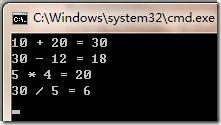
方法得到调用。
10. 以上的方法只能通过静态方法对于C++中的函数进行调用。那么怎样通过静态方法去调用C++中一个类对象中的方法呢?现在我在CPPDemo项目中添加一个头文件userinfo.h:
| 1 2 3 4 5 6 7 8 9 10 11 12 13 14 | class UserInfo {
private:
char* m_Name;
int m_Age;
public:
UserInfo(char* name, int age)
{
m_Name = name;
m_Age = age;
}
virtual ~UserInfo(){ }
int GetAge() { return m_Age; }
char* GetName() { return m_Name; }
};
|
在CSharpInvokeCPP.CPPDemo.cpp中,添加一些代码:
| 1 2 3 4 5 6 7 8 9 10 11 12 13 14 15 16 17 18 19 20 | #include "malloc.h"
#include "userinfo.h"
typedef struct {
char name[32];
int age;
} User;
UserInfo* userInfo;
extern "C" __declspec(dllexport) User* Create(char* name, int age)
{
User* user = (User*)malloc(sizeof(User));
userInfo = new UserInfo(name, age);
strcpy(user->name, userInfo->GetName());
user->age = userInfo->GetAge();
return user;
}
|
这里声明一个结构,包括name和age,这个结构是用于和C#方面的结构作个映射。
注意:代码中的User*是个指针,返回也是一个对象指针,这样做为了防止方法作用域结束后的局部变量的释放。
strcpy是个复制char数组的函数。
11. 在CSharpDemo项目中CPPDLL类中补充代码:
| 1 2 3 4 5 6 7 8 9 10 11 | [DllImport("CSharpInvokeCPP.CPPDemo.dll")]
public static extern IntPtr Create(string name, int age);
[StructLayout(LayoutKind.Sequential)]
public struct User
{
[MarshalAs(UnmanagedType.ByValTStr, SizeConst = 32)]
public string Name;
public int Age;
}
|
其中这里的结构User就和C++中的User对应。
12. 在Program.cs中补充代码:
| 1 2 3 | IntPtr ptr = CPPDLL.Create("李平", 27);
<strong><font color="#ff0000">CPPDLL.User user = (CPPDLL.User)Marshal.PtrToStructure(ptr, typeof(CPPDLL.User));</font></strong>
Console.WriteLine("Name: {0}, Age: {1}", user.Name, user.Age);
|
注意:红色字体部分,这里结构指针首先转换成IntPtr句柄,然后通过Marshal.PtrToStructrue转换成你所需要的结构。
运行结果:
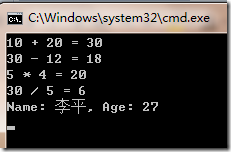












)

)
![[蓝桥杯刷题]合并区间、最长不连续子序列、最长不重复数组长度](http://pic.xiahunao.cn/[蓝桥杯刷题]合并区间、最长不连续子序列、最长不重复数组长度)



-安装Maven详细步骤)
)




二)
)


:基础系统设定与备份策略)